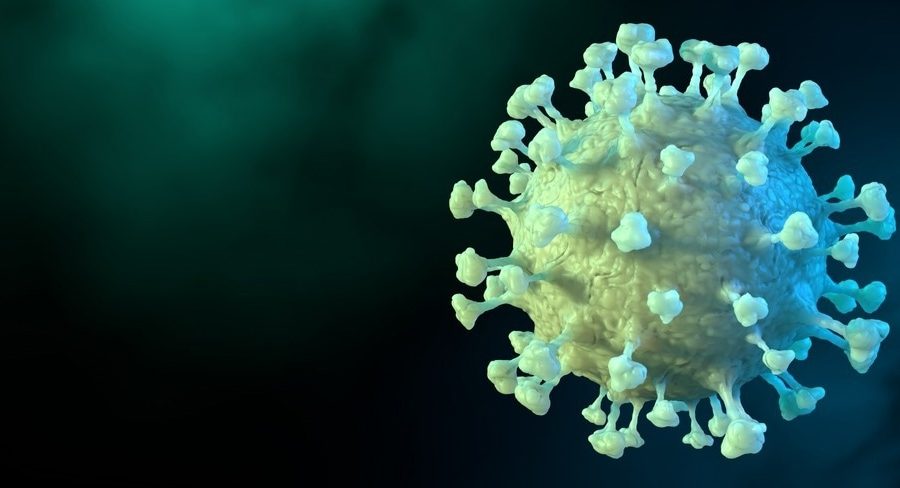The effect of ORF3c, a SARS-CoV-2 accessory protein, on cellular innate immune responses, autophagy, and lung cell mitochondrial metabolism
In a recent study posted to the bioRxiv* server, researchers explored the role of the open reading frame 3c (ORF3c), a severe acute respiratory syndrome coronavirus 2 (SARS-CoV-2) accessory protein not so extensively studied as yet. They determined the cellular localization of ORF3c, its role in modulating the host's antiviral response (e.g., autophagy), and its effects on mitochondrial metabolism.

Background
Since SARS-CoV-2 variants continue to emerge, there is a need for deeper insights into its pathogenic mechanisms to inform mitigation and treatment strategies. Studies have deciphered two sequential phases of coronavirus disease 2019 (COVID-19) with different metabolic features. The first phase is a hyper-inflammatory phase characterized by the Warburg effect, where aerobic glycolysis, adenosine triphosphate (ATP)/energy production, and oxygen consumption increase.
Genetics & Genomics eBook

Compilation of the top interviews, articles, and news in the last year.
Download a copy today
The host activates innate immunity and increases energy production, most likely to combat the SARS-CoV-2 attack. This phase often culminates with the cytokine storm. A second hypo-inflammatory, immune-tolerant phase follows wherein oxygen consumption falls, while mitochondrial respiration and ATP production resume normal levels, and so does fatty acid oxidation.
SARS-CoV-2 has a single-stranded ribonucleic acid (RNA) genome of 30kilobase. Its positive-strand genomic RNA translates two overlapping ORFs, ORF1a, and ORF1b, which, in turn, generates 16 non-structural proteins (NSPs). Genomic studies have also identified several unannotated alternative open reading frames within ORF3a, such as ORF3b, ORF3c, and ORF3d. Host-virus interactome analyses suggest that these proteins associate with SARS-CoV-2 proteins physically and play crucial roles in the virus life cycle, infection, replication, and budding. Among these, the interactions with human mitochondrial proteins seem to be particularly abundant.
Several researchers have suggested alterations of mitochondrial dynamics, including mitochondrial fission and fusion, as the hallmark of COVID-19 pathology. For instance, Hans et al. showed that the ORF9b protein localizes to mitochondria and antagonizes type I and III interferons (IFNs) by targeting multiple innate antiviral signaling pathways. The accessory proteins with mitochondrial localization are highly important to identify COVID-19 therapeutic targets and understanding the mechanisms of SARS-CoV-2-induced disease. Yet, the ORF3c protein remains uncharacterized and under-investigated, perhaps because only sarbecoviruses encode this protein. Nevertheless, ribosome-profiling data strongly suggests that ORF3c is a functional protein.
About the study
In the present study, researchers investigated the effects of SARS-CoV-2 ORF3c on innate immune responses, autophagy, and lung cell mitochondrial metabolism. SARS-CoV-2 ORF3c shares 90% identity with SARS-CoV and 95% with bat-CoV RaTG13. Since its complete protein structure is unavailable, the researchers modeled SARS-CoV-2 and bat ORF3c proteins to predict their structure using the RoseTTAFold software, which deploys the deep-learning algorithm.
Further, the researchers investigated ORF3c mitochondrial localization by confocal microscopy, for which they transfected HeLa cells with the pDsRed2-Mito vector. They also confirmed the mitochondrial localization of ORF3c using the two lung cell lines A549 and HSAEC1. Furthermore, the team investigated how the ORF3c protein modified mitochondrial metabolism through Agilent Seahorse XF Mito Stress analysis. Subsequently, they investigated mitochondria's dependence on various substrates, namely glucose (pyruvate), glutamine (glutamate), and long-chain fatty acids, using the Seahorse Mito Fuel Flex Test Kit.
Lastly, the team investigated the effects of 26 cytokines and chemokines in cells transfected with vectors expressing ORF3c. SARS-CoV-2 has evolved to alter mitochondrial functions to blunt host antiviral defenses. Likewise, it interferes with the formation or maturation of autophagosomes in host cells, a mechanism by which host cells clear pathogens.
Study findings
Structural prediction revealed a tri-dimensional ORF3c architecture with two short alpha-helices (α1 and α2) joined by a loop region. The α2 helix corresponded to the predicted trans-membrane region. SARS-CoV-2 and bat ORF3c proteins differed in R36K and K40R amino acids, which suggested that these two proteins did not have many conformational changes. Immunofluorescence analysis revealed that ORF3c protein co-localized with translocase of outer membrane 70 (TOM70) and TOM20, the two outer mitochondrial membrane proteins. Fractionation analysis in HeLa cells further confirmed that soluble and insoluble (membrane) fractions of ORF3c were almost exclusively localized in the mitochondria.
The real-time oxygen consumption rate (OCR) showed that ORF3c protein increased basal and maximal respiration and mitochondrial ATP synthesis. However, extra-cellular acidification rate (ECAR) profiles showed no increase in glycolysis. The overexpression of each ORF led to an increased proton efflux rate (PER) derived from mitochondria and a decrease in glycolytic PER.
Compared to control cells, the mitochondria of transfected cells could not bypass the inhibitors of the fatty acid pathway through the use of the other two fuels. They also required fatty acids to maintain basal oxygen consumption rate (OCR). Reassuringly, cells transfected with ORF3c, although showing some mild signs of oxidative stress, were able to buffer the negative effects of accumulated hydrogen peroxide due to the presence of a sufficient amount of reactive oxygen species (ROS) scavengers.
Although ORF3c could not modify the expression of 62 genes involved in innate and adaptive immunity, SARS-CoV-2 ORF3c induced an increase in LC3-II and p62 levels compared with the control, indicating an increased number of autophagosomes, while bat ORF3c did not affect the autophagosomal marker levels.
Conclusions
The study data suggested that ORF3c is an important accessory protein that plays a crucial role in SARS-CoV-2 pathogenesis and COVID-19 progression. The researchers observed that ORF3c had mitochondrial localization, altered mitochondrial metabolism, and increased ROS production. It also prevented autophagic degradation by altering the pH of lysosomes. However, ORF3c did not modulate the expression of interferons and cytokines/chemokines. Yet, it remains unclear how ORF3c alters the metabolic state of SARS-CoV-2-infected cells. Thus, future studies should investigate the detailed mechanism by which SARS-CoV-2 accessory proteins alter mitochondrial metabolism and block the autophagic flux.
*Important notice
bioRxiv publishes preliminary scientific reports that are not peer-reviewed and, therefore, should not be regarded as conclusive, guide clinical practice/health-related behavior, or treated as established information.
- Mozzi, A. et al. (2022) "SARS-CoV-2 ORF3c impairs mitochondrial respiratory metabolism, oxidative stress and autophagic flow". bioRxiv. doi: 10.1101/2022.10.04.510754. https://www.biorxiv.org/content/10.1101/2022.10.04.510754v1
Posted in: Medical Science News | Medical Research News | Disease/Infection News
Tags: Adenosine, Adenosine Triphosphate, Autophagy, Cell, Chemokines, Confocal microscopy, Coronavirus, Coronavirus Disease COVID-19, covid-19, Cytokine, Cytokines, Fatty Acids, Genes, Genome, Genomic, Glucose, Glutamine, Glycolysis, HeLa Cells, Helix, Hydrogen Peroxide, immunity, Interactome, Interferons, Lysosomes, Membrane, Metabolism, Microscopy, Mitochondria, Oxidative Stress, Oxygen, Pathology, pH, Protein, Respiratory, Ribonucleic Acid, Ribosome, RNA, SARS, SARS-CoV-2, Severe Acute Respiratory, Severe Acute Respiratory Syndrome, Stress, Syndrome, Virus

Written by
Neha Mathur
Neha is a digital marketing professional based in Gurugram, India. She has a Master’s degree from the University of Rajasthan with a specialization in Biotechnology in 2008. She has experience in pre-clinical research as part of her research project in The Department of Toxicology at the prestigious Central Drug Research Institute (CDRI), Lucknow, India. She also holds a certification in C++ programming.
Source: Read Full Article
